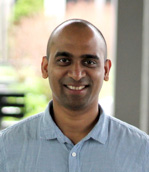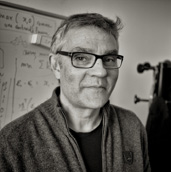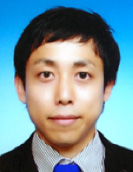
Presenter Information
- All of you will be in oral presentation.
Each presentation has 20 min including 15 min presentation and 5 min Q&A.
Your presentation assignment is in the conference program;
QCAV2017 Conference Program (PDF: The latest version was updated on May 10) - You should bring your own PC for the presentation.
We will prepare video projector which has D-Sub 15 pin (VGA connector) and HDMI interfaces.
You can use either of them as you would like.
* You must bring dongle or adapter by yourself, if your laptop with another video connectors required to connect to the projector. We do not have them for Mac or MS surface. - Could you test to connect your PC to the projector before starting your session.
QCAV2017 Program
| SUNDAY 14 MAY | |
|---|---|
| 10:00 - 10:10 am | Opening |
| 10:10 - 11:30 am | Session 1: Image Analysis Chair: Yasushi Makihara (Osaka University, Japan) |
| 11:30 am - 13:00 pm | Lunch Break |
| 13:00 - 14:00 pm | Plenary Talk 1 Chair: Hajime Nagahara (Osaka University, Japan) Towards Next Generation 3D Cameras Prof. Mohit Gupta, University of Wisconsin-Madison (United States) |
| 14:00 - 14:10 pm | Break |
| 14:10 - 16:10 pm | Session 2: Camera and Sensing Chair: Chikahito Nakajima (Central Research Institute of Electric Power Industry, Japan) |
| 16:10 - 16:20 pm | Break |
| 16:20 - 17:40 pm | Session 3: Face and Gesture Chair: Takashi Komuro (Saitama University, Japan) |
| 18:00 - 20:00 pm | Reception Location: Prior The conference reception will be held at the restaurant of the same building as the conference venue. |
| MONDAY 15 MAY | |
|---|---|
| 9:30 - 11:30 am | Session 4: Machine Learning Chair: Johan Debayle (École nationale supérieure des mines de Saint-Étienne, France) |
| 11:30 am - 13:00 pm | Lunch Break |
| 13:00 - 14:00 pm | Plenary Talk 2 Chair: Philippe Bolon (Université Savoie Mont Blanc, France) Machine Learning, Deep Learning and Optimization in Computer Vision Prof. Stéphane Canu, INSA de Rouen, Normandie Université (France) |
| 14:00 - 14:10 pm | Break |
| 14:10 - 16:10 pm | Session 5: 3D Measurement Chair: Yann Gavet (École nationale supérieure des mines de Saint-Étienne, France) |
| 16:10 - 16:20 pm | Break |
| 16:20 - 18:00 pm | Session 6: Object Classification and Tracking Chair: Yvain Quéau (Technical University Munich, Germany) |
| 19:00 - 21:00 pm | Banquet Location: HISAGOAN |
| TUESDAY 16 MAY | |
|---|---|
| 9:30 - 11:30 am | Session 7: Human Factor Chair: Fabrice Meriaudeau (Universiti Teknologi Petronas, Malaysia) |
| 11:30 am - 13:00 pm | Lunch Break |
| 13:00 - 14:00 pm | Plenary Talk 3 Chair: Hiroyasu Koshimizu (Chukyo University, Japan) Machine vision for various manipulation tasks Dr. Yukiyasu Domae, Mitsubishi Electric Corporation (Japan) |
| 14:00 - 14:10 pm | Break |
| 14:10 - 15:50 pm | Session 8: Autonomous Vehicle Chair: Shuji Oishi (Toyohashi University of Technology, Japan) |
| 15:50 - 16:00 pm | Break |
| 16:00 - 17:20 pm | Session 9: Inspection Chair: Akira Kubota (Chuo University, Japan) |
| 17:20 – 17:30 pm | Closing |
Plenary Speakers

Towards Next Generation 3D Cameras
Prof. Mohit Gupta
University of Wisconsin-Madison, USA
Abstract:
We are in the midst of a 3D revolution. Robots enabled by 3D cameras are beginning to autonomously drive cars, perform surgeries, and manage factories. However, when deployed in the real-world, these cameras face several challenges that prevent them from measuring 3D shape reliably. These challenges include large lighting variations (bright sunlight to dark night), presence of scattering media (fog, body tissue), and optically complex materials (metal, plastic). Due to these factors, 3D imaging is often the bottleneck in widespread adoption of several key robotics technologies.
I will talk about our work on developing 3D cameras based on time-of-flight and active triangulation that addresses these long-standing problems. This includes designing `all-weather’ cameras that can perform high-speed 3D scanning in harsh outdoor environments, as well as cameras that recover shape of objects with challenging material properties. These cameras are, for the first time, capable of measuring detailed (<100 microns resolution) scans in extremely demanding scenarios with low-cost components. Several of these cameras are making a practical impact in industrial automation, being adopted in robotic inspection and assembly systems.
Presentation slide is here (PDF).

Machine Learning, Deep Learning and Optimization in Computer Vision
Prof. Stéphane Canu
INSA de Rouen, Normandie Université, France
Abstract:
As quoted in the Large Scale Computer Vision Systems NIPS workshop, computer vision is a mature field with a long tradition of research, but recent advances in machine learning, deep learning, representation learning and optimization have provided models with new capabilities to better understand visual content. The presentation will go through these new developments in machine learning covering basic motivations, ideas, models and optimization in deep learning for computer vision, identifying challenges and opportunities. It will focus on issues related with large scale learning that is: high dimensional features, large variety of visual classes, and large number of examples.
Presentation slide is here (PDF).

Machine vision for various manipulation tasks
Dr. Yukiyasu Domae
Mitsubishi Electric Corporation, Japan
Abstract:
Bin-picking, re-grasping, pick-and-place, kitting, etc. There are many manipulation tasks in the fields of automation of factory, warehouse and so on. The main problem of the automation is that the target objects (items/parts) have various shapes, weights and surface materials. In my talk, I will show latest machine vision systems and algorithms against the problem.
Presentation slide is here (PDF).